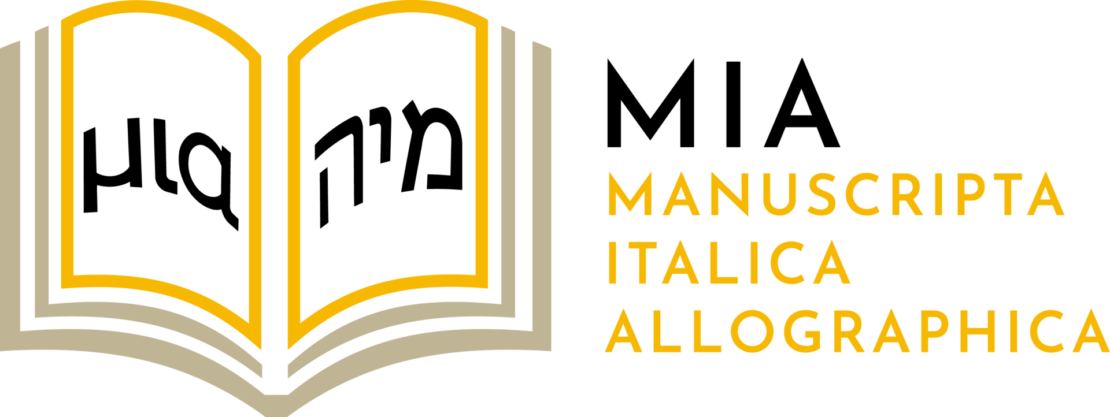Type of project: National | Start date: 17/10/2023 | End date: 16/10/2025
Allography is the practice of writing a language using the alphabet of another language due to historical and cultural circumstances. During the Middle Ages and the beginning of the modern era, Italian vernaculars were written in both Greek and Hebrew characters by the Greek communities of Southern Italy and the Jewish communities scattered across the peninsula, respectively. There are also records of sporadic uses of the Arabic and Syriac alphabets for Italo-Romance varieties, the reasons for which are still to be clarified. The allographic texts include significant documents for the history of Italian linguistics, such as the earliest written records of the Sicilian, Calabrian, and Salentino dialects.
Despite their importance, allographic texts have largely been neglected by Italian linguists and philologists. The Manuscripta Italica Allographica (MIA) project aims to fill this gap, being the first comprehensive study of the phenomenon of allography in the Italo-Romance context.
MIA plans to create a digital, open-access descriptive catalog of all allographic manuscript texts in Italo-Romance, providing a detailed description for each document. The second step is the digital edition of a selection of representative texts in both Greek and Hebrew alphabets, already published in print form.


Acronym:
MIA
Funding programme:
PNRR M4C2 - Investimento 1.1 _Progetti di Ricerca di Rilevante Interesse Nazionale - PRIN 2022 codice progetto 2022ZAH9HC_SH5_PRIN2022 – Manuscripta Italica Allographica (MIA)– finanziato dall’Unione europea – NextGenerationEU
Funding body:
MUR - European Union
Grant agreement:
2022ZAH9HC
Status:
Ongoing
CNR-ILC role:
Beneficiary
Project coordinator:
Marco Maggiore, University of Pisa, Dept. of Philology, Literature and Linguistics
CNR-ILC Research Unit Chair:
Federico Boschetti
Staff:
Angelo Mario Del Grosso
Riccardo Del Gratta
Giulia Re
Noemi Terreni
Website/s:
https://allographica.eu

